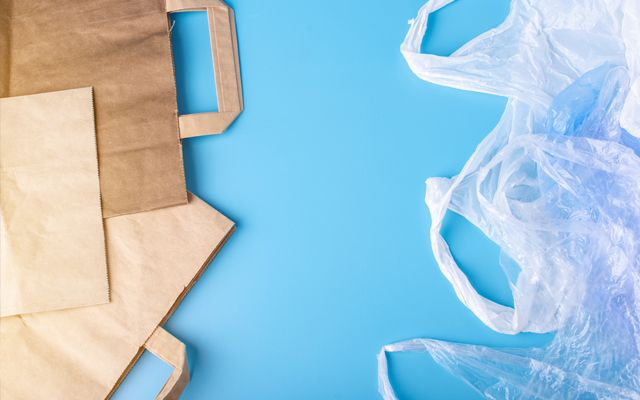
The debate around the pros and cons of paper versus plastic packaging has intensified in the last few years. Widespread headlines questioning the use of plastics have encouraged businesses to review their sustainability policies and look at ways of moving to more eco-friendly packaging solutions. Interestingly, such reviews have caused many to question whether paper is always a more environmentally friendly solution to plastic.
Single use plastic bags, for instance, were invented to ‘save the planet’ according to the son of Sten Gustaf Thulin, the Swedish engineer who came up with the concept of plastic bags and created the first product back in 1959. Sven was concerned about the negative environmental impact of huge swathes of forest being felled to provide paper for bags, so created plastic bags as a more eco-friendly alternative. Of course, he couldn’t possibly have been expected to foresee the problems that extensive plastic pollution is causing today.
Knowing what we do now though, it’s only natural that responsible organisations and individuals are investigating the potential of alternative packaging methods and materials – and asking whether there is a perfect material solution? The short answer is probably no, there’s no universal ‘silver bullet’.
By way of example, let’s return to carrier bags. Back in 2006, the Environment Agency examined a range of bags made from different materials to find out how many times they would need to be reused in order to have a lower global warming potential (or carbon footprint) than a conventional single-use plastic bag.
Their study found that paper bags needed to be reused at least three times in order to bring their carbon footprint down to that of a basic plastic carrier bag. This is only one fewer use than plastic ‘bags for life’ – the thicker ones that you can use over and over again.
This poses a dilemma for informed users; should they stick with plastic bags with all the bad press surrounding them? Should they move to paper bags which have a higher carbon footprint, and attempt to use them at least 3 times – but how often is a paper carrier bag strong enough to be used more than a couple of times anyway? Or should they go with a ‘bag for life’ that they should be able to use over and over again?
Let’s look at another plastic packaging product – pallet wrap. As yet, no one has come up with an effective non-plastic product for ensuring pallet stabilisation and safety. So, in the meantime, environmentally responsible companies are focussing on ways of reducing the amount of plastic they use to wrap a pallet, and recycling it after use. Experience suggests that using smart products, properly optimised, can reduce pallet wrap by as much as 80% – which has a very positive environmental impact.
What about void fill? There are, of course, a range of very efficient and effective void fill products on the market made from both paper and plastic. Both options perform well in this area – with the best products providing excellent, lightweight product protection. And whether paper or plastic, the product is very easy to reuse and recycle.
So what if we were to focus our efforts on Reducing, Reusing and Recycling? Is this our answer? Maybe the real way forward is to accept that there is no ‘one size fits all’ solution and to review the products we use on a case-by-case basis – assessing each on its merits. The assessment criteria could look something like this:
All this information is easily obtainable, and each element can very simply be awarded a score of 1-10. Throw this into a matrix, and we’ve got a framework that will help intelligently guide our decision-making process.
This is the sort of project we help customers with regularly as part of our value-adding 4th Dimension approach, so if it’s of interest to you please feel free to get in touch. We’d love to continue the conversation.